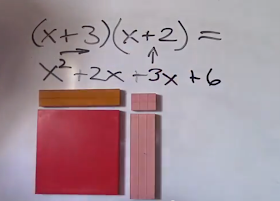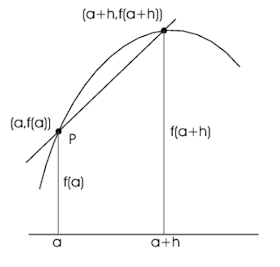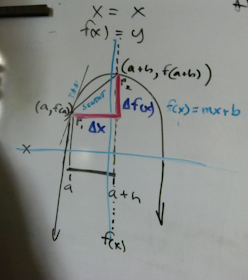26Oct1944 - 13Nov2014 Vernon Jerry Mortensen
Died of a massive heart attack. Survivors uncertain. He had 2 sisters, one of which I knew, and three brothers none of whom I ever met. He had 17 nieces and nephews and they had last I knew, 48 kids between them. He was kind of the black sheep of a rather large family, you could say. He had lots of aunts and uncles on both sides mostly deceased by the time I met him, I know his mother was one of 13. I don't know about his father...his mother was 93 when she died and his father 82. I remember distinctly him saying he never wanted to get that old. He owned a shit load of land, and stuff, proving once again: he who dies with the most toys still dies. His math legacy is still uncertain. People may one day remember the name Jerry Mortensen but if they do it won't be because of land and timber and cows.
Here is a
standard Obit. I know exactly who wrote this:
It's a good picture of him. That's the guy I knew. Regular obituary over, believe it or not, what follows is the short version.
I found out about it on Tuesday the 18th of November by phone with his ex-wife. He died in a room I had slept in on many occasions. He knew (for months) he should go to a doctor if he wanted to live but he absolutely refused. We lost so much that night. So many things in various stages of completion, none complete. I know for a fact he didn't care. I also know he wanted his body burned. "Get rid of it, cheapest way possible." I concur.
There was one who could make the Mathematics beautiful.
The first thing he said to me in person was, "Great! Nice to meet you...where's your father?"
In 1990 I went to visit Jerry in Idaho for 2 weeks and didn't come home for 10 months.
Then 15 years of life happened. Truth stranger than fiction. I don't believe half the stories...and I was there in person for many of them. I watched him feel bad for people who had tried to take advantage of him successfully or unsuccessfully...and then turn right around and take advantage of people (usually quite successfully), he was particularly fond of playing off people's greed. He'd tell them he'd make them wealthy if they'd just fill their garage with his math kits...or do this real estate deal, or timber deal, or cattle deal or what have you.
To call him "multifaceted" would be quite the understatement because if you do the math you can only cut a diamond to produce a finite number of faces. He had many faces he'd show the world and there were many sides to those faces, and any one of those wore several hats. I choose to get know "the math guy" the most, although I spent time with the real estate guy, businessman, cattle rancher, horseman, logger, farmer, and heretic too.
Even the math guy had several different hats, and each one of those had several...uh, personalities. Marketer, salesman, wheeler dealer...teacher, actor, producer, product creator, writer, author. He'd go from impossibly patient mentor/teacher to incredibly impatient mentor, from overly generous marketer to screwing all the distributors at once with a pen-stroke. He'd send me into situations where his 'business partners' were so mad at him they wanted to kill me just to piss him off...and then he would laugh when I told him some of the solutions I'd hammered out. Then half the time he wouldn't keep all the agreements. I watched him let Math U See go and build a company, and I watched him utterly destroy EZ Math, both in a court of law and in the market place. Of the two EZ Math was the far better funded and had a marketing arm already in place. MUS had to start from much more humble beginnings. There were/are others. You/we are all off the hook. Mostly.
I remember sitting in a hotel in Nampa Idaho for three days before an older gentleman would even sit down with me. He apologized for keeping me waiting but said, "it took me a week to get the mad off and then another two days when I found out he wouldn't come face me in person."
Jerry: "It's not even $100,000.00, just go take care of it." As an aside he taught me to forge his signature and gave me a book of checks so I could easily write checks and (rarely) sign contracts where time was of the essence and we didn't have time to drive them from CDA to Sand Point or Bonner's Ferry or where ever the heck he was...some people liked it when they got a check from me better because they knew I didn't hand out a check unless there was money there to cover it...unlike some other people who worked for him and Jerry himself. Jerry enjoyed flying kites. Sometimes those kites crashed, hard, but it was a whole lot rarer than it should have been. Once in a while it landed him in court and it was there that he really enjoyed himself although he'd say he didn't. Looking back at land deals and some of the court cases I sat in on, he really was crazy like a fox--a no money down king, surrounded by spinning plates with only a very few of them broken on the floor to use yet another metaphor. Breaking a few plates was to be expected and didn't bother him much. They weren't really his plates, after all. Although if you talked to the other half of the party whether they owned the plate or not they were rarely so forgiving.
He only broke his word to me once outright. It was more times than that but I forgive the other ones because they were situations that spiraled out of his control. Only once did he actually break his word and I never forgave that because he did it on purpose, and it wasn't about the money it was about the simple concept that a man's word is his bond and no paper can hold the force of that bond. We did all of our business like the men of yore. No paper work. We shook hands. Spoke plainly. Said what we meant. Meant what we said. Understood each other: handshake. You will find no contracts or any document of any kind for that matter with both of our signatures on it. If you can't keep your word or think things might go in such a way in the future that you can't keep your word even through no fault of your own, don't give it. Very, very simple. Future very hard to predict, though. All our agreements have now formally ended, save one. I may break that one, on purpose, and call it even.
I remember one time we shook hands and he said, "...don't screw me."
And I said, "Don't screw me." And we laughed.
"So the deal is, we don't screw each other."
"No, the deal is WE teach math."
"No the deal is YOU teach math...I'll help a little bit. Maybe. If you need it. But you don't need it."
"Goddammit. That means you're not helping."
"That means you don't need my help."
"Then stay out of my way."
"Count on it." And yes, there's an inside joke there. I knew better than to count on Jerry, but he knew if push came to shove he could always count on me. That doesn't mean he wasn't a loyal friend, because he was, and there are companies that are wrecked because of that loyalty, but my mother didn't raise a fool, despite appearances.
One thing I was pretty good at doing and Jerry hated to admit it, was predicting what would happen with certain "deals" or "situations" because of the personalities involved. Like when he sold the company, myself included, to a seminar company owned by unscrupulous Mormons. It ended badly. Or when he sent me to Nebraska to open a "Mortensen Math Center"...or Colorado, or South Carolina, or Utah or Idaho, Or Florida, or Texas...that's the short list. He sent me off on the road for weeks and months at a time, for years. We made stupid amounts of money and most people still have no idea what Mortensen Math is.
"Hey, I just wanted to thank you for sending me to a place where they still have 'Nigger On A Stick' on the Menu in most of the local restaurants." Me, calling to check in from the Texas Panhandle. We laughed about that for years and years after.
There were women, but I'll leave that part out.
One of the last places I saw him was at an office building he had that we called Three Mile, because it was at a place called Three Mile, north of Bonner's Ferry, the area where Highway Two splits off Highway 95, you can drive all the way west to Seattle or east to Duluth and beyond on 2. The last thing he said to me in person after handing me an envelope of $100's which brought us even and our last agreement to a close was, "I consider you a friend." and we shook hands and I said, "I consider you a friend, also."
There were the 10,000 words, right there. He nodded, I nodded...there was nothing else to say. I had planned to be back the next spring. That would have been the spring of 2006. I'd go home to Maui for the winter...I was famous for saying I'd be back when the grass was green and the snow was melted. There was always gonna be that next time.
Then nine more years of life happened.
He rarely returned my phone calls. The last email he wrote me was February of 2013.
"Good to hear from you even if it was only a "Hi Jerry". I have been busy studying languages. I read novels in Spanish at a rate of about one per week. If I recall you had a girl friend, Gabby, I think that was her name. You mentioned your trips with her to Mexico. I suppose you learned some Spanish during that era. I tried unsuccessfully to connect to the link you sent me. Help! I'd like to know what you were sending me. Take care! You are a unique and exceptional person. I would love to see you some time and catch up on all that you have been up to during the years we have been out of touch. Your friend, Jerry Mortensen"
Since then I wrote him and called him a few times around this theme:
"...Would like to do some "expert" interviews with you and make some audio programs for sale. People have asked me for them and would buy them. Basically we just do a few 1 hour sessions and talk about math...history of the company...some stories about teaching...like the ones you used to tell about your various teaching experiences as you traveled around...how you got the company together...trips to Australia and Alaska teaching aborigines...we could easily fill up several hours just talking about math. Turn it into an audio program package it and then sell it...as an actual cd product and as a set of downloads...my number is the same, call me..."
And then less than two years later, he died. For almost a year of it he knew he should go see a doctor about his heart. He never got around to that or to calling me back.
I know "the estate" is going to be a complete and utter mess. A maze of mortgages, court documents, and contracts several feet thick and several feet high, unknown properties and bank accounts and storage units...here, and in other countries. I was one of the rare ones to whom upon death he owed nothing physically...but he did owe me (and my sons) some math...or maybe I owe him some math. Time will be the teller of that tale.
When great men walk among fools, the fools know him not. This one came in clever disguise and relished in acting the part of and playing right along side the fool(s).
Saṃsāra.



























